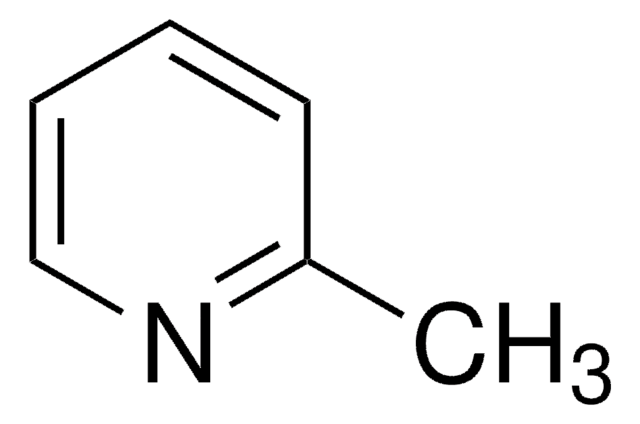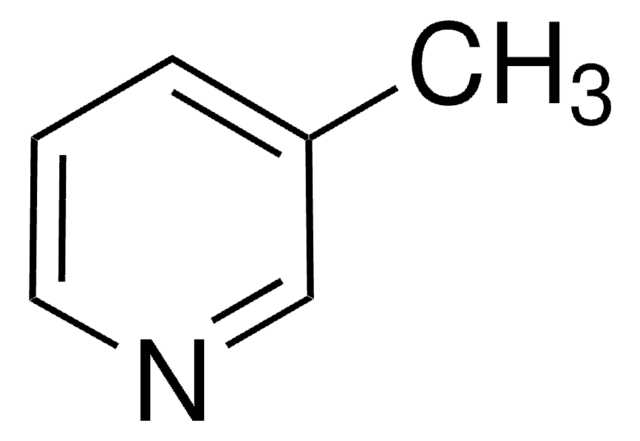74350
2-Picoline
analytical standard
Synonym(s):
α-Picoline, 2-Methylpyridine, NSC 3409
About This Item
Recommended Products
grade
analytical standard
Quality Level
vapor density
3.2 (vs air)
vapor pressure
10 mmHg ( 24.4 °C)
assay
≥98.5% (GC)
autoignition temp.
995 °F
shelf life
limited shelf life, expiry date on the label
expl. lim.
8.6 %
technique(s)
HPLC: suitable
gas chromatography (GC): suitable
impurities
≤0.5% water
refractive index
n20/D 1.499-1.502
n20/D 1.500 (lit.)
bp
128-129 °C (lit.)
mp
−70 °C (lit.)
density
0.943 g/mL at 25 °C (lit.)
application(s)
cleaning products
cosmetics
flavors and fragrances
food and beverages
personal care
format
neat
SMILES string
Cc1ccccn1
InChI
1S/C6H7N/c1-6-4-2-3-5-7-6/h2-5H,1H3
InChI key
BSKHPKMHTQYZBB-UHFFFAOYSA-N
Looking for similar products? Visit Product Comparison Guide
General description
Application
- Cigarette smoke using reversed-phase high-performance liquid chromatography–electrospray ionization tandem mass spectrometric method (RP-HPLC–ESI-MS/MS).
- Chinese faint-scent cigarettes using gas chromatography–mass spectrometry (GC–MS) technique.
signalword
Danger
Hazard Classifications
Acute Tox. 3 Dermal - Acute Tox. 4 Inhalation - Acute Tox. 4 Oral - Eye Dam. 1 - Flam. Liq. 3 - Skin Corr. 1C - STOT SE 3
target_organs
Respiratory system
Storage Class
3 - Flammable liquids
wgk_germany
WGK 1
flash_point_f
84.2 °F - closed cup
flash_point_c
29 °C - closed cup
Choose from one of the most recent versions:
Certificates of Analysis (COA)
Don't see the Right Version?
If you require a particular version, you can look up a specific certificate by the Lot or Batch number.
Already Own This Product?
Find documentation for the products that you have recently purchased in the Document Library.
Customers Also Viewed
Protocols
US EPA Method 8270 (Appendix IX): GC Analysis of Semivolatiles on Equity®-5 (30 m x 0.25 mm I.D., 0.50 μm)
Our team of scientists has experience in all areas of research including Life Science, Material Science, Chemical Synthesis, Chromatography, Analytical and many others.
Contact Technical Service








